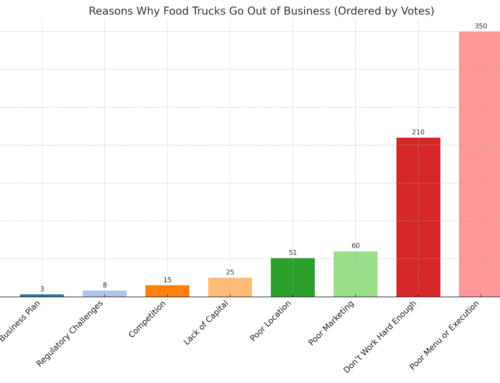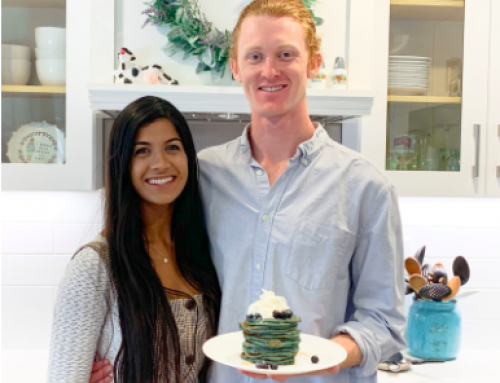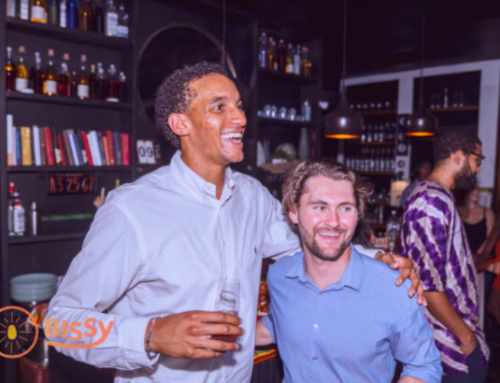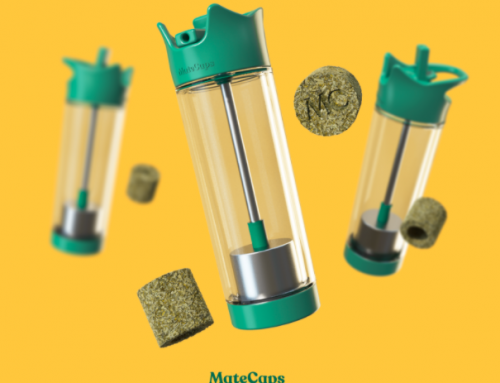Hello! Who are you and what food business did you start?
My name is James Oliver and I’m the Founder/CEO of Atlas Bars, the next generation protein bar. Atlas Bars are high in protein, low in sugar, and made with high-performance real food ingredients. Since I started the company in 2017, we’ve experienced a CAGR of over 500% YoY.

How Many Protein Bars Have You Sold?
My first month in business, Atlas Bar sold around 1500 bars. We now have sold over 1 million.
How did you come up with the idea?
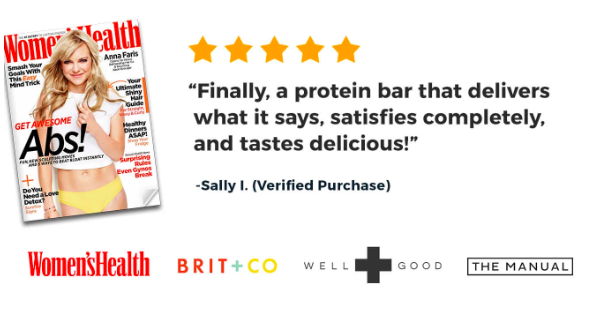
Ever since I was a kid, I’ve been fascinated by the relationship between food and performance. My earliest memory of this is from when I was 4 years old and my parents told me that eating carrots can improve eyesight. Wanting to turn my eyes into hawk eyes, I promptly sat down with a big bowl of carrots and ate the entire thing.
As I grew from a child into a teenager, so did my fascination with nutrition. When I was in high school, I remember being confused about avocados. At the time, mainstream messaging around fats was all negative and so I asked my mom if avocados (which are loaded with fats) are good for you, to which she replied yes. Now thoroughly confused, I decided to dive into the research myself to try and demystify the fog of nutritional advice.
Growing up I had another interest that’s key to the story – the human body and how far it can be pushed. The origin of this interest came from my reading a book on the Navy SEALs at 12 years old, which described in detail their grueling basic training.

After reading that, I began doing push ups and flutter kicks in my room until I couldn’t lift myself off the floor. Fast forward to college, where my desire to test my limits manifested in my entering into endurance events including Ironman Triathalons, 24-hour obstacle races, and 24-hour ultra hikes. To fuel my active lifestyle, I would rely heavily on protein bars. In fact, I usually consumed 2-3 protein bars per day – mainly Pure Protein and Clif Builders early on. Later Quest and Rx.
The intersection of my interest in nutrition and human performance served as the foundation for Atlas, where every ingredient has scientific evidence behind it that demonstrates the benefits it has for your body. The three nutrition principles that the product is based on – quality sources of protein, low sugar, and real food – are as close to nutritional truths as you’re going to get. Meaning that adhering to these principles will undisputedly lead to a healthier diet.
Related Reading: How We Grew the Top-Selling Aloe Vera Beverage Brand in the United States
Of course, the bar aisle is already filled with at least one million other brands so I needed to validate my theory. My senior fall at Tufts, I took a course called Entrepreneurial Finance where the culminating project was a full-fledged business plan for a hypothetical business.
I took this as an opportunity to research and develop a plan for Atlas. The more market research I did, the more convinced I was that there was a space for this product in the world. The initial batch of bars that I made was with my mom in our kitchen. I had little to no experience with cooking/baking/formulating.
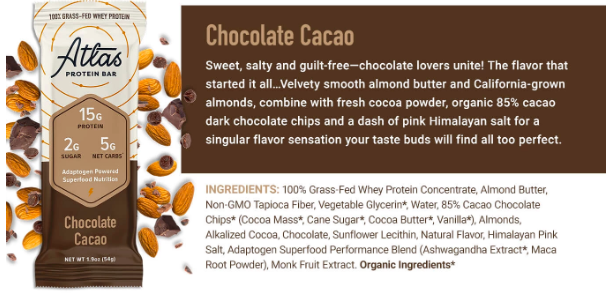
I had worked hard throughout my childhood and college (landscaping, selling cutlery, driving Uber) and had saved most of it so by my senior year I had a few thousand dollars saved up. Once I convinced myself the idea had some legs, I committed all of this to launching Atlas with the goal of having a product by the time I graduated.
I found a company to help me finalize and produce the formulas and I found a graphic designer from Macedonia to help me design the packaging. Other than that, I had to do everything myself. So while other seniors enjoyed senior spring, I spent hundreds of hours in my university’s computer lab breathing life into Atlas.
When I graduated in May 2017, I received my first batch of 5000 bars. I figured my worst-case scenario was that no one would buy them and I’d be stuck with 5000 bars I had to eat. I was okay with that. Fortunately that didn’t happen and here we are today.
Take us through the process of developing and testing your first keto-friendly protein bar?
Again, I knew absolutely nothing about anything. What I did know was protein bars. I had been an avid consumer of protein bars for years and years so I knew where the gaps where and what the selling points were. If I wasn’t an avid consumer of the product, it would’ve been substantially harder if not impossible to start this company.
From working with my mom in the kitchen on the initial bars, I knew what the main components of the bar had to be – nut butter, concentrated protein source (egg or whey).
Once I knew the ingredients I wanted to use, I found a manufacturer that could help me finalize the formula and get it ready for production. Finding a manufacturer was simply a matter of using Google. I spoke to them on the phone a few times and determined that they could do what I needed them to. The whole prototyping process took 4-5 months, but was probably shorter than normal because I knew what I wanted going in.
My initial goal was driving volume as opposed to profit. I knew that if I could sell, sell, and sell, my costs would come down and profits would follow.
Describe the process of launching the business.

Creating my website was the process of me sitting in a computer lab for dozens of hours and grinding through it. I had no background in web design or anything even remotely related. I just started doing it. I paid more for the photos on the website than anything else – $500.
In hindsight, that was probably a steep cost to pay for 6 photos. I also hired a “web design” expert to help me design the site for $2000. That was a huge mistake. I ended up firing them and then designed a site for $75 that looked and functioned much better. My launch plan was to start going out to different functional fitness gyms and to sell. From my market research, I knew that there were about 6000 gyms in the country and almost 2000 in the North East.
I figured that if I could get just the gyms in the Boston area to buy $100/month, I would have a six-figure business. So that is what I started to do. I hit the streets and started going into gyms at every hour, leaving bars in mailboxes, calling people – whatever I could do. As an aside, I should say that I identify as an introvert so this “knocking-on-doors” strategy did not come naturally. I had to force myself to do it, but it was necessary.
The first 10 months were the hardest. I would get up at 4am to drive Uber. Drive Uber from 4am to 9am and then hit the street to sell bars. At 5pm, I would get back in my car to drive Uber until around 9pm. I’d then take my Uber earnings and put them right back into the business. Because I started off with no other funding source, this is how I had to do it.
Related Reading: How I Launched a $10 Million ARR Hangover Recovery Drink
After hundreds of hours in the car and countless CrossFit gyms, I realized that the equation didn’t make sense. The amount of effort that was being put in for one sale was disproportionate to the yield and online was going to be more scalable with less effort. So about 10 months in, I pivoted to focus more on e-com. If I had to go back to myself before launching, I would tell myself to focus on this sooner.
Since launch, what has worked to attract and retain customers?
Treat your customers like people. I can’t emphasize this enough. Customers are the lifeblood of any company and we try to do whatever we can to make them happy.
I can’t tell you the number of times that I’ve received a message from a disgruntled customer and by writing a thoughtful/kind reply that customer has turned into a loyal customer.
It’s free and feels good to do. I still run all of the customer support because I value the dialogue with customers so highly and am very hesitant to delegate that to someone else. I am always trying to think of new ways to engage with customers and to improve the conversation with them.
How are you doing today and what does the future look like?
We’re primarily focused on growing our e-commerce presence as we love the interaction that it allows with our customers and think there is so much more that we can do there.
Beyond that, we’ll be on-boarding with key, strategic accounts in the coming months to expand our retail footprint.
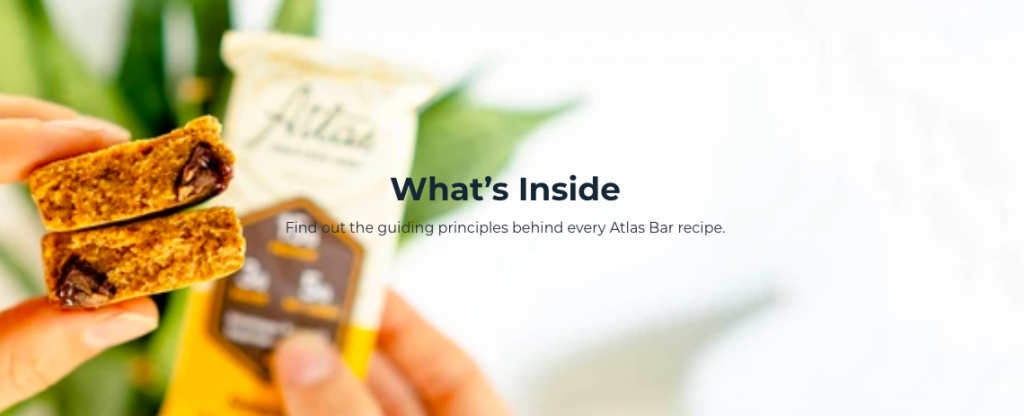
What Have You Learned by Starting Atlas Bar?
Taste is king. It seems obvious, but I think there are many who make the mistake of prioritizing other things above that (functional benefits, plant-based, etc.) When starting out, I was one of them. You could make the most nutritionally-sound, functionally-beneficial product in the world, but if it tastes like compost no one is going to eat it, much less pay you for it.
OODA Loop, a concept I took from the US Air Force. It stands for Observe – Orient – Decide – Act. Essentially, it’s a model for iterative learning. Observe = collect data, orient = contextualize data, decide = make a decision based on the data, act = execute that decision. Rinse and repeat.
This was and still is hugely important to us as we’re constantly collecting feedback on the product, our processes, etc. to see where we’re falling short and where we can improve. Customers are the lifeblood of your business, listen to them.
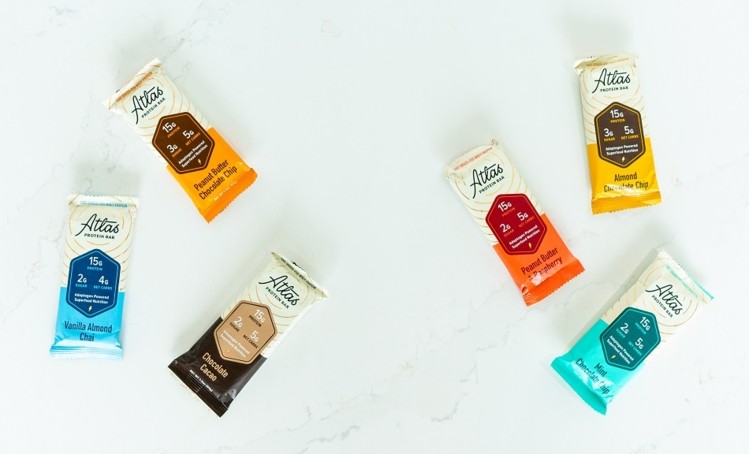
What have been the most important podcasts or books in your life?
Podcast: Dan Carlin’s Hardcore History, ep. “Blueprint for Armageddon”
22-hour podcast on WWI. Carlin goes into the conditions that people lived in and what they were able to endure. In the early days, I often referred to that when I was beat down, telling myself that “if those guys could live in a muddy hole for 9 months in those nightmarish conditions, I can work 16 hours a day.”
Book: Shoe Dog
Origin story of Nike. Helped me understand how messy entrepreneurship can be and that experience isn’t a requisite for success. Phil Knight had no experience in footwear and no massive funding, yet he ended up building one of the largest and most iconic brands in the world.
Advice for other food entrepreneurs who want to get started or are just starting out?
Word Hard and Self-Educate – you need to be willing to work and you need to be willing to learn – otherwise you don’t have a chance. Even if you are willing to do both those things, the odds are still stacked against you. I had no experience in the food and beverage industry when starting out but did and still do everything I can to educate myself. Between podcasts, books, and the internet – all of the knowledge is out there, you just need to be disciplined about your own education.
Stay Focused – figure out where you want to be in 3-5 years and work backwards to figure out how you’re going to get there. This will allow you to be deliberate about where you decide to expend energy/resources to and where not to. This is even more important when you’re starting out and have limited resources.
Know Your Strengths/Weaknesses – in the beginning, you have to do everything. But if there’s a responsibility that’s crucial to the business’ success and you’re not good at it, you need to do one of two things – get good at it or find someone who is. Failing to do so can lead to a premature death of the business.

